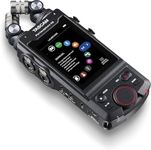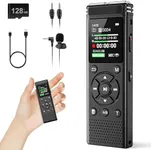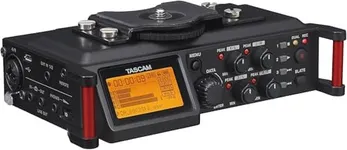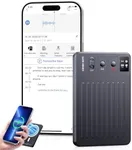Buying Guide for the Best Portable Recorders
When choosing a portable recorder, it's important to consider your specific needs and how you plan to use the device. Portable recorders are versatile tools used for capturing audio in various settings, such as interviews, music recordings, lectures, and field recordings. Understanding the key specifications will help you select a recorder that best fits your requirements. Here are some essential specs to consider and how to navigate them.Audio QualityAudio quality is crucial because it determines how clear and accurate the recorded sound will be. This is typically measured in bit depth and sample rate. Higher bit depth (like 24-bit) and sample rate (like 96kHz) provide better sound quality but result in larger file sizes. If you're recording music or high-fidelity sound, aim for higher values. For voice recordings or casual use, standard CD quality (16-bit/44.1kHz) is usually sufficient.
Microphone TypeThe type of microphone built into the recorder affects the sound capture. Built-in microphones can be omnidirectional (capturing sound from all directions) or unidirectional (capturing sound from one direction). Omnidirectional mics are great for capturing ambient sounds, while unidirectional mics are better for focused recordings like interviews. Choose based on whether you need to capture a broad soundscape or isolate specific sounds.
Storage CapacityStorage capacity determines how much audio you can record before needing to transfer files. Portable recorders use internal memory and/or removable storage like SD cards. Higher capacity allows for longer recording sessions without interruption. If you plan to record long events or high-quality audio, look for recorders with expandable storage options.
Battery LifeBattery life is important for ensuring your recorder doesn't run out of power during critical moments. Portable recorders can use built-in rechargeable batteries or replaceable batteries. Longer battery life is essential for extended recording sessions, especially in the field. Consider how long you'll need to record and whether you'll have access to power sources for recharging.
Portability and Build QualityPortability and build quality affect how easy it is to carry and use the recorder in different environments. Lightweight and compact designs are ideal for on-the-go use, while robust build quality ensures durability. If you need to carry the recorder frequently or use it in rugged conditions, prioritize a model that balances portability with sturdy construction.
Connectivity OptionsConnectivity options determine how you can transfer recordings and connect external devices. Common options include USB ports, XLR inputs, and Bluetooth. USB ports are useful for transferring files to a computer, while XLR inputs allow for connecting professional microphones. Bluetooth can enable wireless transfer and control. Choose based on how you plan to use and share your recordings.
User Interface and ControlsThe user interface and controls affect how easy it is to operate the recorder. Look for intuitive menus, clear displays, and accessible buttons. Touchscreens can offer more advanced control but may be less reliable in certain conditions. If you need to make quick adjustments or operate the recorder in low-light environments, prioritize models with user-friendly interfaces and tactile controls.






















